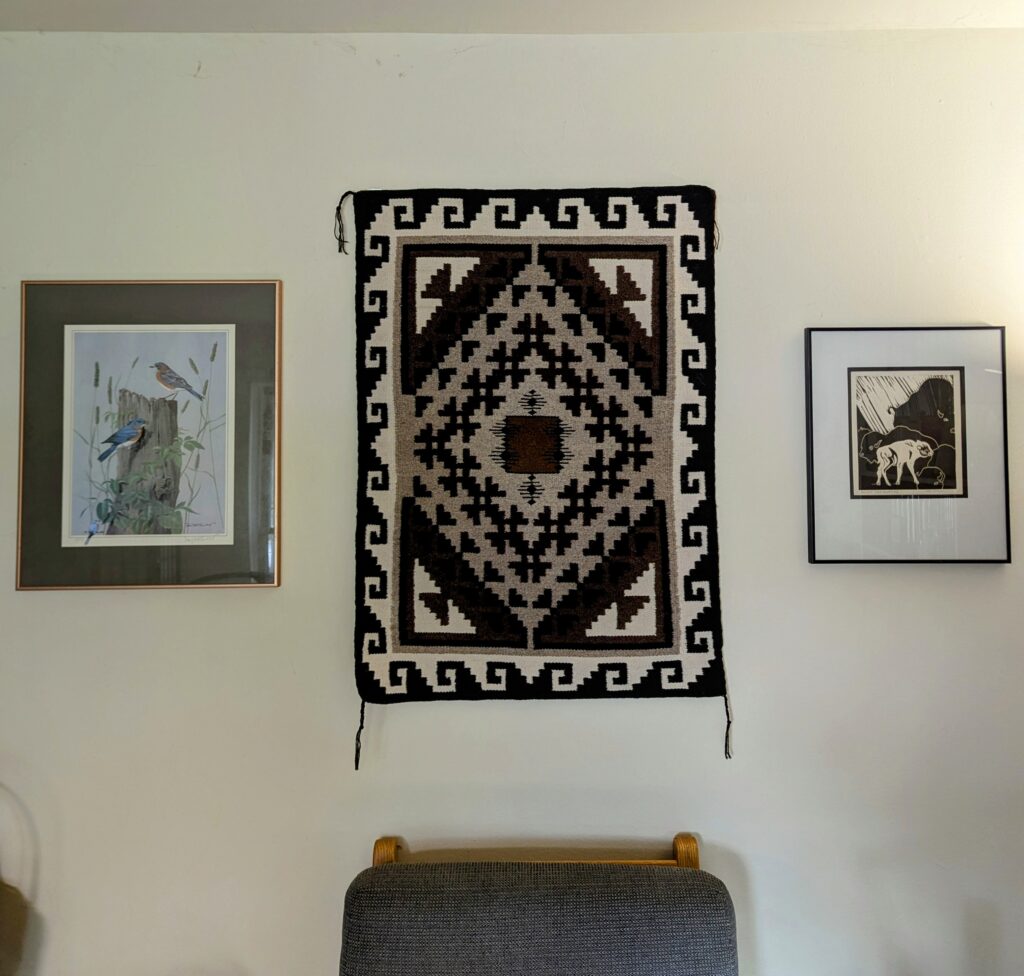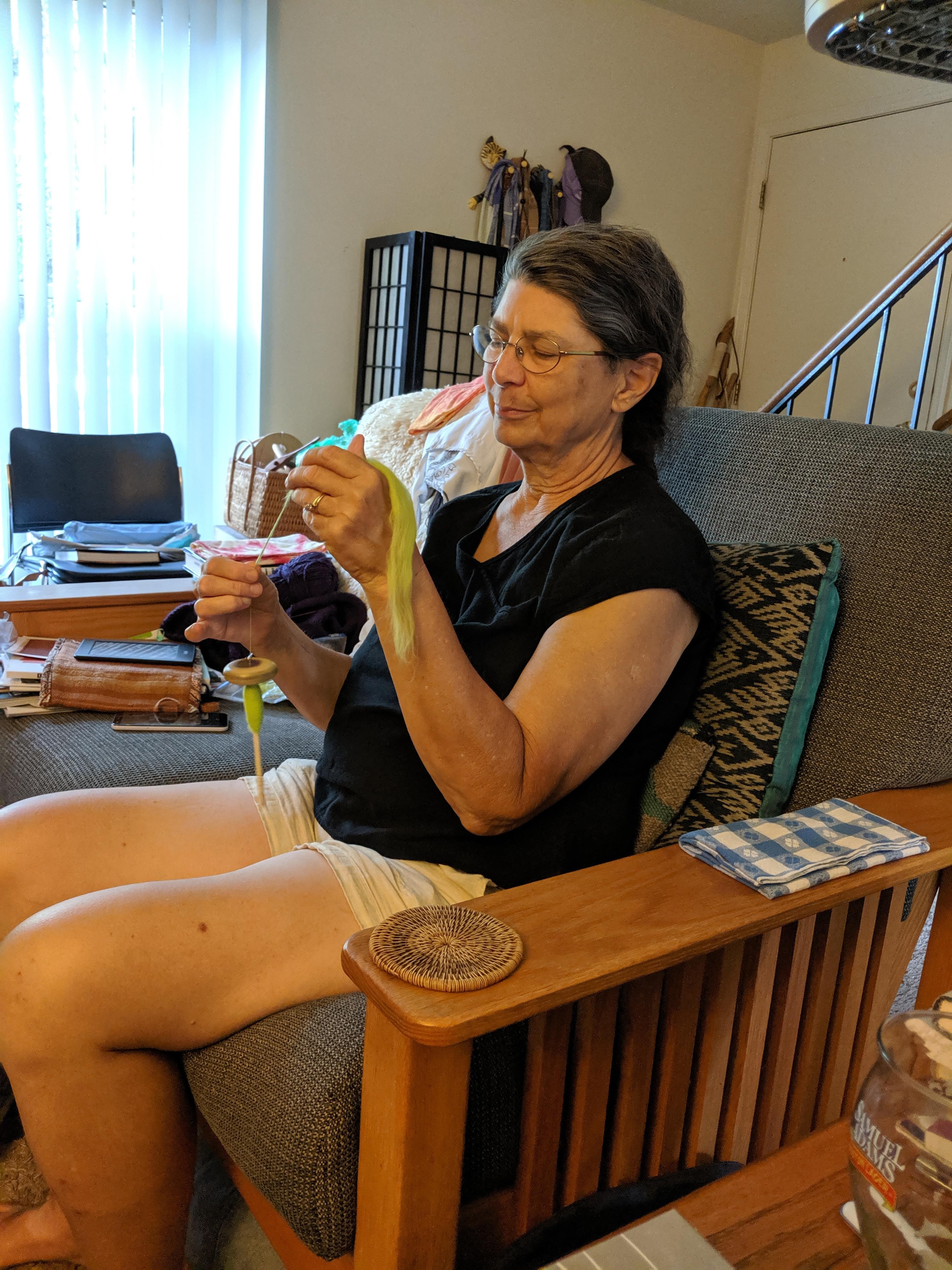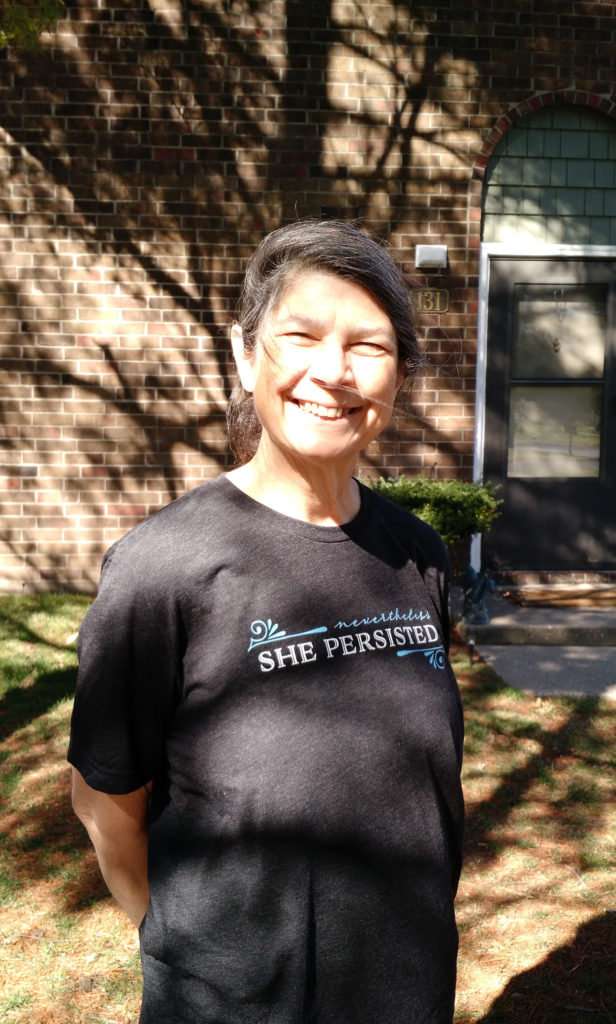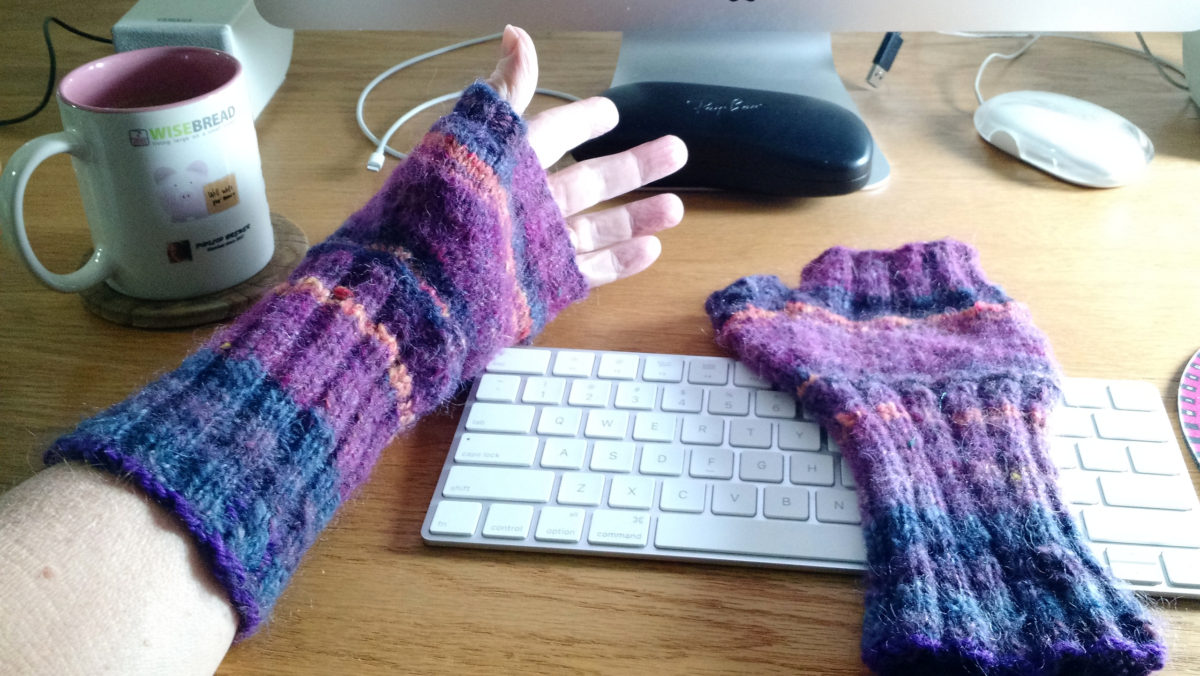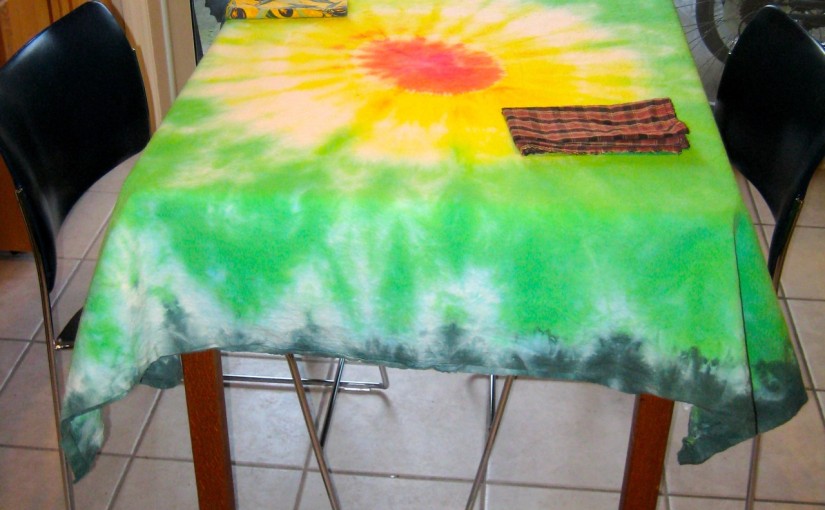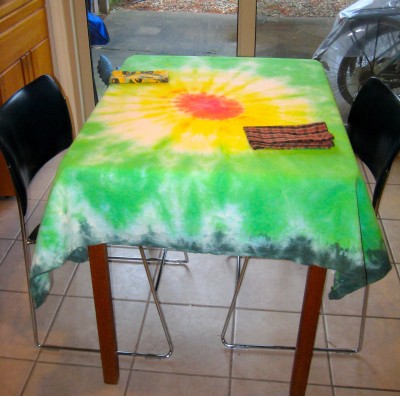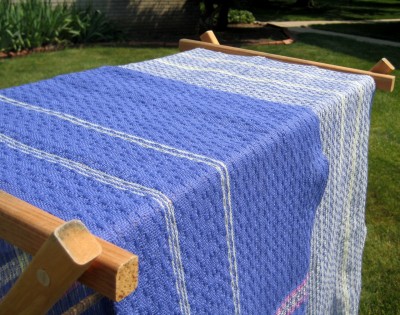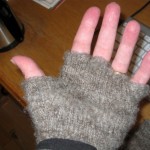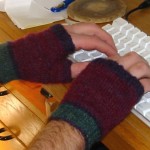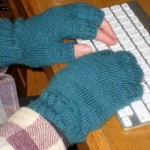Jackie and I went to the Forest Glen Preserve, a nature preserve in eastern Illinois, over near the Indiana border.
We scouted the campgrounds, because the local Esperanto group is planning to some tendumado. We found two, although there’s at least one more.
One is a pretty ordinary Midwestern campground with a mixture of tents and RVs. It was pretty full, but only as crowded as you’d expect on Saturday morning of Memorial Day weekend. It had showers and flush toilets, firewood on sale, etc.
Near that one (but far enough away that noise wouldn’t be a problem) was the “tent campground.” It was different in that it didn’t have parking spaces for the campsites. There was an area just a few yards away where you could leave your car for up to 20 minutes to unload, and then you were supposed to move it to a parking area that was still really quite close—I’ve carried my luggage further in a hotel. Still, it seemed to be enough to discourage campers. Even Memorial Day weekend, there was nobody there—sixteen vacant campsites. (It did lack flush toilets. Also, the recent rain had left some of the campsites under water, although the dry sites were also vacant.)
Once we’d scouted the campgrounds, we went for a hike. We picked the Big Woods trail, which a posted list had described as the most rugged of the preserve’s trails. We took that with a grain of salt. Here in the flatland, pretty much any change in elevation seems to qualify a trail as rugged, but it was somewhat rugged. The train went down twice into ravines, then back up again, and ended at an observation tower at what I assume is the high point of the preserve.
We saw plenty of neat stuff—sugar maples and tulip trees, white oak, sassafras, ferns, various kinds of mushrooms. (I saw what might be the tallest sassafras tree I’ve ever seen. It was huge. I usually think of sassafras as being scrubby little things.)
The trail was muddy, but only very muddy in a few places (plus, of course, the places where it crossed running water). We ran into three very wet, dirty guys with tools who said they’d been doing trail maintenance.
The trail was only a little more than 1 mile, but out-and-back so we got in maybe 2 ¼ miles of hiking.
We left it at just that much hiking, because we still needed to go to the Viking Reenactment, which was the reason that we were visiting Forest Glen this weekend in particular.
Two of the reenactors seemed to focus on fiber crafts. One is a member of the spinners and weavers guild, and was using some of Jackie’s handspun yarn to demonstrate weaving with a warp-weighted loom. We had a fun chat.
The other fiber-crafty person told us about her theory of mud-colored peasants. Many reenactors, she said, end up with clothing in colors of sheep, because dyeing fabric is another whole skill that you need to learn—and making your own natural dyes is two or three more skills (growing or gathering dye plants, and learning how to prepare them for dye use). However, in her experience meeting actual modern-day poor peasants, even the really poor ones go to considerable effort to not be the color of mud. Hence, she proposed, actual Viking-era villagers probably wore clothing that was as brightly colored as possible, within the limits of the natural dyes that were available to them. (They had several sources of yellow, yellowish green, red, and purplish red. Blue was available. A really good green was tricky, because you had to get a good yellow and then overdye with blue.)
Despite her theories, all the other reenactors seemed to be wearing clothing in natural colors.
What with scouting and hiking and viking, it was already lunch time. We had lunch at Gross’ Burgers, then headed home (pausing just a bit at a rest stop to let a severe thunderstorm pass).
A good outing.
